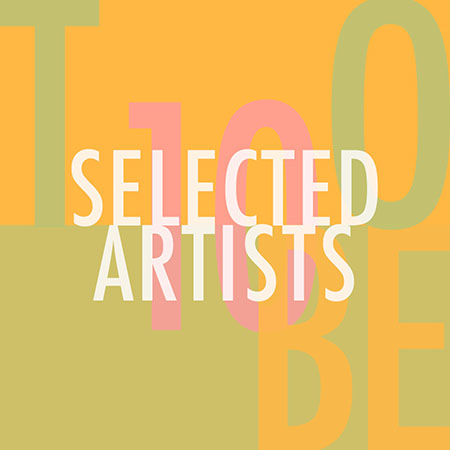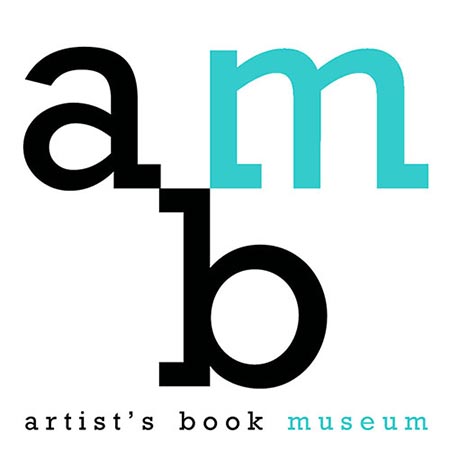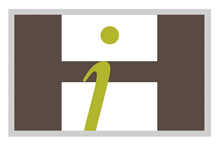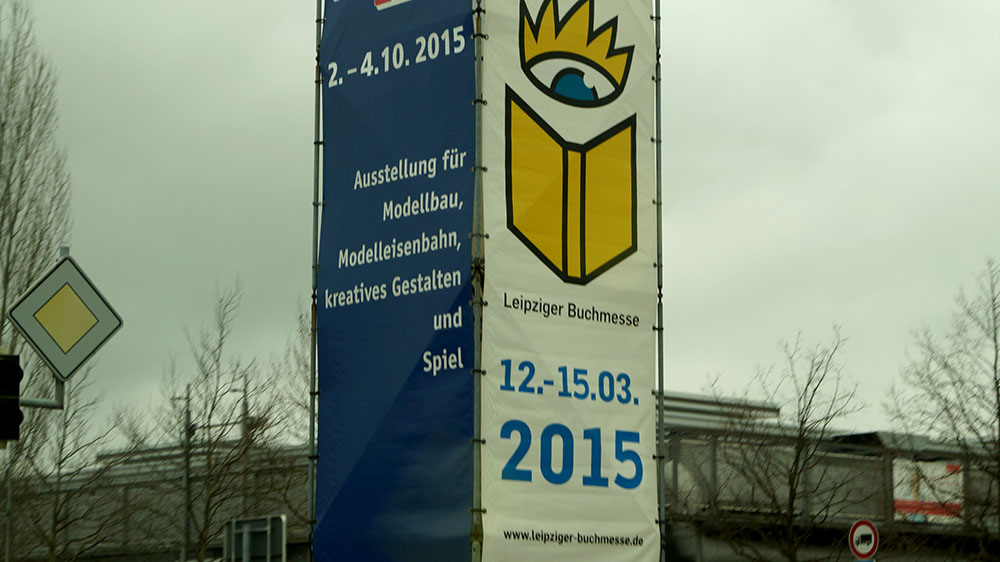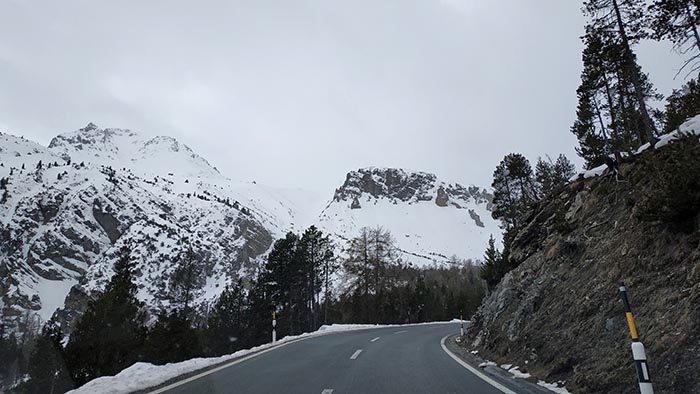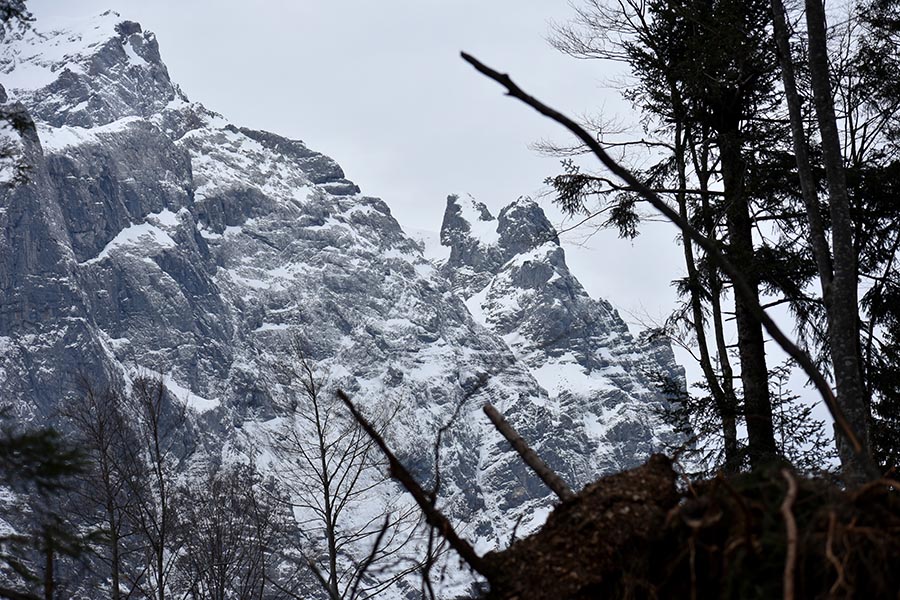
Richard Noyce (for Lithotage 2012, München, 1st September 2012)
A PRINT? WHAT’S THAT?
www.artwriter.co.uk
Many thanks to our Friend to Mr. Richard Noyce
I am not sure what printmaking is anymore, well not exactly. I write books and articles about printmaking, I have travelled widely to talk about it, to meet artists and printmakers in the studios and workshops and to see exhibitions of printmaking; I have attended printmaking conferences and participated in juries for printmaking competitions. But I can no longer be certain what printmaking is, not exactly. This admission might perhaps come as a surprise, or might even raise questions about my suitability as a person to write, speak and sit in judgment on the subject. I have to say from the outset that I have not gone through some sort of dark night of the soul, neither have I experienced a crisis of conscience – far from it. Instead I believe that, with the continuing and rapid evolution of the contemporary visual arts, printmaking is a stronger and more varied art form now than ever before. But it continues to shape-shift with alacrity and to take on numerous alternative forms. And, as always, the basic human need to attempt to define things and nail them down has led to the use of the term, ‘alternative printmaking’. And, as always, this has led to muddier rather than clearer waters.
So, the first question should be, ‘alternative to what?’ and I ask this for a very good reason. An alternative route between two places will still get you from point A to point B, will cover different ground and perhaps take more or less time, offering different experiences along the way, but still getting you to the same destination. In a similar way the observational and imaginative power of the artist, mobilised through her or his choice of alternative mediums and materials, leads to the creation of an original work of art that can be shared with others. Despite the efforts of those who set themselves up as being the ‘art establishment’ at various times in the past, there have always been artists who have defied the establishment, taking the various visual art forms in new and often extreme directions. The richness of the history of the global visual arts scene is in many ways the result of the work of the rebels rather than the traditionalists. Printmaking has for many centuries offered alternative ways of making, and being alternative is nothing new: neither is the historically undeniable fact that printmaking has always been a difficult subject to define or nail down. Many among the ranks of Printmakers, despite the image that some choose to present to the world, are revolutionary, sometimes anarchic, and choose ways of working that are different, even radically so. What is more, Printmakers have a long history of questioning the status quo and shaking a fist at established society. In short, ‘Alternative Printmaking’ has a very long and honourable history of making work that is different, challenging, revolutionary and therefore ‘alternative’, (even if that term was not used) to what went before and had become accepted as the orthodox form of the medium.
Paul Croft, a noted British printmaker and Tamarind Master Printer who also teaches Printmaking at Aberystwyth University in Wales, organised a well-received exhibition in 2007 with the title, ‘Stone-Plate-Grease-Water’ which was shown at the Museum of Modern Art in Machynlleth, and later in London. This was a very international exhibition that demonstrated beyond question the versatility of lithography. After the official opening I followed two smartly dressed older Welsh ladies – handbags and hats much in evidence in the middle of that Sunday in chapel-strewn Mid Wales – as they viewed the exhibition. They stopped at the first work and declared it most emphatically to be a watercolour – and then looked at the title card and exclaimed that it was a lithograph. The next work was hailed by them as a beautiful drawing – and once again they expressed surprise that it was a lithograph. After repeating a similar dialogue for the next few works, one turned to the other and said, ‘Ah, so they’re all lithographs! What a versatile medium, we must find out more!‘ and went to buy a catalogue. Lithography gained two new fans that day, and many more during the run of the exhibition. As people who are connected with printmaking, we are not too surprised by this, but isn’t it wonderful what can be achieved, given the right situation?
Printmaking is certainly an alternative means of creating an image to that offered by Painting or Drawing. While it lacks the immediacy of a pencil mark on paper, or the directness of a brush stroke on canvas, it offers one crucial difference, and that is the inherent possibility of creating a reproducible image, one that can be produced in an edition, with each print being almost precisely identical to the others in the edition. It is true that paintings and drawings can now be reproduced in astonishing detail by the ‘giclée’ process, which can be very deceptive. On a visit to Vienna, a few years ago, I visited the Albertina museum with the ambition of seeing their collection of works by Albrecht Dürer. I walked into the hushed gallery and saw his masterpieces, including, ‘The Young Hare‘ and ‘The Great Piece of Turf’, hanging on the soft red walls. From a distance of a few feet they looked as wonderful as I expected them to, until I looked more closely at the labels and read that the originals were on exhibition elsewhere and that what I was looking at were digital reproductions, albeit of an extremely high quality! Paying homage, in this case, turned to disappointment. ‘Giclée’ prints are essentially photographic reproductions, and lack the subtleties and nuances that art lovers look for. As an aside, the French verb ‘gicler’ from which the printing term is derived means ‘to squirt’ and is more colloquially applied to the means by which male cats mark out their territory! But, as opposed to such photographic reproductions, true prints offer something different, something distinct, and something far more complex, with that essence that comes from the process by which an image is transferred from a matrix onto a surface, generally paper, resulting in a numbered edition of prints. I will turn later to the problematic area of the matrix in digital and other forms of printmaking, and for the present will remain with this image > matrix > paper > numbered edition process.
The generally agreed lineage of printmaking in this sense is from stone engraving and relief, to wood engraving and relief, to etching and metal engraving (including mezzotint), to lithography and planography, to screen-printing or serigraphy, and now to digital mediums. The evolution of this lineage occupied several thousand years, and is closely reflective of the process of the evolution of technology, with which printmaking has always been closely allied. Once again, the present symbiotic (although some would say incestuous) relationship between printmaking and technology is nothing new.
All the traditional processes, with the exception of screen printing, require that the artist, or the block, plate, or stone maker, produces the image in reverse on a matrix that is then prepared and inked according to the technique being used, before being placed on the bed of a press so that the image can be transferred under pressure to a sheet of paper, or by the simpler process of the application of hand pressure using a baren, or the back of a wooden spoon. Prints made in all these ways have a particular allure to collectors and art lovers – as well as to artists. There is something about the processes by which the ink is transferred to the paper that gives traditional prints their special quality, their attraction, and their worth: or to use a word in the same sense in which Walter Benjamin used it, their ‘aura’.
Prints made within this spectrum of techniques, and combination or variation of techniques, do not necessarily all conform to a uniform style or approach, or a tightly defined technique. There are further alternatives within each of the conventionally accepted forms of traditional printmaking, and such alternatives have been developed throughout the long history of this art form and across many countries. In fact, it is the persistent presence of a willingness to experiment with techniques and materials, and to develop alternative forms, that has served printmaking so very well, giving the art form a vitality and range of variations that continue to intrigue and amaze. It is not surprising therefore that it is a visual art form that has become so widespread in world culture as to be endemic. And it starts with something very simple, something that is commonly known among children and those who teach them in many parts of the world: the humble print made by slicing a potato or other vegetable in half, then carving lines, or holes, or patterns, in the cut surface before dipping it in ink, or paint, and pressing it against paper – there it is, a print, capable of being reprinted over and over, of being combined with other images, other colours! This is printmaking in its simplest form, reduced to its essence.
Beyond this simple form printmaking techniques become steadily more complex, involving processes, techniques, materials and technologies that, taken together present a bewildering range of alternative choices and permutations for an artist. There are some practitioners of printmaking who get very hung up on working within this range of alternatives, becoming expert in one or another of the techniques they choose. The knowledge and experience they build up is of course valuable to those with whom they share it: teaching, whether formal or informal, has always been very much part of printmaking – the master/apprentice relationship still has real value and the relationship between the artist and the master printmaker has become one of the core strengths of printmaking. But, valuable and fascinating though it may be, is the development of a skill in the use of a technique all there is, and is this enough? I am reminded of the reference to medieval theologians who, it is said, argued endlessly about how may angels could dance on the head of a pin: intellectually and spiritually absorbing, no doubt, but in the end utterly irrelevant to the business of everyday life. Thus it is with prints that present a masterly skill in technique but offer no deeper resonance, no contemplation of the human condition, or no indication of the relationship of the artist to the world in which she or he lives. If printmakers wish to make such prints and collectors wish to buy them, then that is of course OK – but it is never going to be more than a transaction of limited lasting worth.
***
At this point the important question arises concerning the problem of the value of precise definition. I have a degree of wariness, of scepticism even, about the value of definition when applied to what a person is, or does. As human beings we are far too complex to be rigidly defined, and such exclusive description tends too often to miss the subtleties and oddities that mark us as individuals. So, the question arises: do you want to be defined as a printmaker, or even more tightly as an etcher, lithographer or wood engraver, or do you want to be known as a human being who is also an artist who happens to use printmaking techniques in the making of art? And if so, what do you mean by the definition you choose? This is not intended to be pedantic, but to go to the core of what it is that we do.
So, how does the dictionary help? The Concise Oxford Dictionary (1982 edition) defines ‘art’ (firstly) as: ‘skill, especially human skill as opposed to nature; ability in skilful execution as an object in itself; cunning; imitative or imaginative skill applied to design, as in paintings, architecture, etc.’ It also defines ‘artist’ (firstly) as ‘one who practices one of the fine arts, especially painting’. Curiously, the word ‘printmaker’ is not defined, at least not in the 1982 edition! But the current online edition of the Oxford Dictionary defines ‘printmaker’ as ‘a person who makes pictures or designs by printing them from specially prepared plates or blocks.’ So, following this definition strictly, someone who makes prints by other means such as screen-printing or digital processes is not a ‘printmaker’. This will come as welcome relief to those in the traditional printmaking community who have only recently got round to accepting, albeit it grudgingly, that screen printing might perhaps be a valid form, and who still consider digital prints to be well outside the limits of acceptability, if not actually the work of the powers of darkness! All of which comes back to ‘Alternative Printmaking’ and what it can be said to mean.
Over the past decade or more I have explored contemporary printmaking and the international printmaking community through journeys to a number of very different countries and also through the medium of the Internet. My two most recent book titles both incorporate the word ‘edge’, and reading those books will reveal some of the complexities and paradoxes that this word entails. What is certain however is that contemporary printmaking is in very good health, that it continues to expand and diversify and, importantly, that it continues to defy exact and scientific definition. All of these qualities offer artists and students an extremely wide range of possible techniques and approaches, as well as many different opportunities for sharing the results. Further than this, the number of international conferences, exhibitions and events that are generated by contemporary print continues to increase. I suggest that there is no other single visual arts form in which those who produce the work, write about it, or collect it, can have such a wide range of ways in which to get together at events such as ‘Lithotage’, to look, to learn and, importantly, to share ideas. For all these reasons contemporary printmaking continues to exert a strong fascination in a growing number of people.
As the notion of the print and printmaking is unpacked a whole new set of questions arises. Can an image produced through screen printing, in which the intermediary image is a stencil transferred by hand or photographic means the right way round (and not reversed) onto a soft fabric, be a print? What about a stencil print applied to the wall of a building, or a roadway in a city? What about a digital image on paper, or on a fabric or plastic surface? What about a digital image produced on vinyl and applied to the side of a vehicle? Or an image produced on perforated vinyl the size of a building and applied to its windows? Or an image transferred onto a three dimensional ceramic object? Or a series of images produced in a digital sequence and projected on a wall, or on the exterior of a building? What indeed about a digital photograph – either as an image created within the camera, or in which the image has been subsequently electronically manipulated – can this be considered a valid form of printmaking? Finally, what about a series of digital images produced as a slideshow, or even as a film, and copied to be distributed on CD, or DVD, or as an electronic file – can this be considered as a print? After all, we are used to speaking about ‘photographic prints’ or ‘prints of a film’. All of these, and other new forms and hybrids, are becoming increasingly accepted as printmaking on an extended scale, and many of them are now routinely accepted in international competitions and exhibitions of printmaking. Each of them is, at least, a visual image that can be reproduced through one of the broad variety of printmaking techniques, and each of them has a beginning in the eye and mind of the artist, an intermediate stage in the means of production, and a final result that can be viewed by others.
As a side note: The appearance of photography in the mid-19th century signalled – it was claimed – the death of painting. Since then, in various contexts and at various times, photography has been the ‘enfant terrible’ of the art world, being accused, vilified, praised, ignored, celebrated and finally, one hopes, assimilated. Consider, for example, this quotation: ‘When photography was invented artists thought it would bring ruin to art but it is shown that photography has been an ally on art, an educator of taste more powerful than a hundred academies of Design would have been…’ If asked to guess the date of the quotation, few would get it right – but it dates back to an article on, ‘Photography and Chromolithography’ in ‘The Philadelphia Photographer’ in April 1868. And yet, painting is still not dead, refusing to die. Closer to the present time the rise of digital print has caused a similar crisis – for those who like to create and maintain crisis as a means of validating the status quo, and their part in it. The fact remains that digital photography has become completely embedded in the contemporary lives of at least half the people on this planet, and cannot be ignored.
However, what of monoprints or monotypes or unique prints on paper? Can these be considered as prints since they are the result of the use of printmaking processes, with the image prepared on a surface, to be transferred in reverse on to paper by the application of pressure? The answer, so far, has to be yes, but it is not intended to produce such works in an edition – they are one-offs, they are original works of art, so where does this leave them, and what are they? There are so many questions and so few answers; and all of them arising from the extraordinary range of ways in which artists in their search for expression can utilise printmaking processes, producing their work in editions and making it available to larger numbers of people at prices that more people can afford.
In my explorations, both real and virtual, I find that the range of alternatives is growing. So much so in fact that it is tempting to say that all forms of printmaking are alternative! But, on the assumption that engraving, etching and lithography are the conventional forms, being based on the reversed image > matrix > paper process, what can be included in the term, ‘alternative printmaking’? I would suggest, for a start, screen printing, and its street art relative the stencil or ‘szablon’; I would add in monoprints and monotypes; and of course digital prints, as well as the newly emerging form of 3D digital objects, not forgetting time-based digital products such as photography, film and animation. In addition to this I would include all forms of printmaking, both traditional and alternative, in which there are unusual combinations of techniques, the application to unusual materials, prints made at extremely large (or an extremely small) scale or incorporated into installations. In all of these forms there is the element of reproducibility, or at least the potential for this. That is for a beginning – there are no doubt other alternatives – but it is an impressive list nonetheless.
The matrix, as generally and conventionally understood, is a physical and material intermediary between the artist’s idea and the final image. The mystique of the matrix is central to the conventional and historical wisdom of printmaking. In exhibitions in which the matrix, be it plate, block or stone, is exhibited alongside the print, it can serve a most useful object lesson to those looking at it – the relationship between matrix and print becomes instantly clear. But how to consider the image applied to the fabric of the screen, or the stencil, or the digital file stored on a computer hard drive, or even the digital photograph? Can these be considered as an extension of the idea of the matrix? Or is the true matrix always within the imagination of the artist? (One could, at this point, think about the role of the imagination in the films in ‘The Matrix Trilogy’…)
But in terms of printmaking, is the matrix located within that creative nexus, that intellectual point of decision through which the broad conceptual thinking about the work in the mind of the artist is brought to a point of focus, so that it can be turned into a physical matrix by the tools and materials in the artist’s hands, or into a virtual matrix on a hard drive through the camera, scanner, tablet or keyboard that the artist uses, and beyond that used to be reproduced in physical or virtual form? If this more inclusive definition is used then the whole world of possibilities in printmaking is opened wide. And that is where it all starts to become one of the most fascinating forms of contemporary human expression.
To illustrate some aspects of the current variety of work that artists are making within the broader definition of printmaking, I will show a selection of images of work by a few of the artists I am including in my forthcoming book, ‘Printmaking Off the Beaten Track’, which is due for publication in September 2013. The book will feature 56 artists from 25 countries along a broad arc from Indonesia to Finland, via the Middle East, and one or two other countries. ‘Off the Beaten Track’ refers to places that are rarely if ever featured strongly in exhibitions and writing about contemporary printmaking, but which are nonetheless places in which interesting work is being done. The selection of artists, and through that the list of countries, is idiosyncratic, and largely as a result of my personal subjective choice. Among the artists are some who continue to live in the countries of their birth, and others who for political or personal reasons have chosen to live elsewhere. A number of countries are places where there has been, or still is, conflict in the form of civil or international war, or disruption following the ending of communist rule, or conflict resulting from the friction between the growing influence of fundamentalist faiths and the conflicting desires for modernity. The beaten track, like the edge, is a transitory place undergoing constant redefinition.
And, in conclusion:
Printmaking – let it never be forgotten – is art, and contemporary printmaking is contemporary art. Printmaking is not something else, it feeds on and feeds the same things as other forms of visual art. It is just another medium through which someone’s ideas, passions, fears, desires and emotions are expressed in a visible form to be shared with others. I believe that Printmaking continues to change with changing circumstances and changing technology, as it has done for centuries. I believe also that we are in a most fortunate position; one in which all mediums of printmaking, whether traditional or digital, used singly or in combination, can be equally valid, and equally respected. Contemporary printmaking is no longer content with staying in the obscure corners into which some commentators pushed it in the past, and in which some printmakers were content to let it stay. It is a vibrant and continually evolving set of mediums that defies safe definition. Paradoxically, while much printmaking continues to take place at the edges, where there is a greater sense of risk and danger, it is also moving resolutely towards the centre of the contemporary visual arts. I believe that in the coming years printmaking will no longer be seen as a poor relation, but will be front and centre where it can do what it has always been good at doing – celebrating the creative potential of artists all over the world, revealing the deeper truths in society, and asking those questions that need constantly to be asked, but which many shy away from. ‘Who are we, where do we come from, how should we relate to others, and where are we going?’
It will, I believe, be a fascinating experience.
Richard Noyce
Wales, July-August 2012

